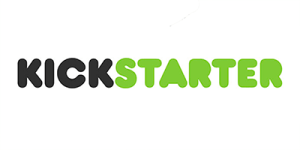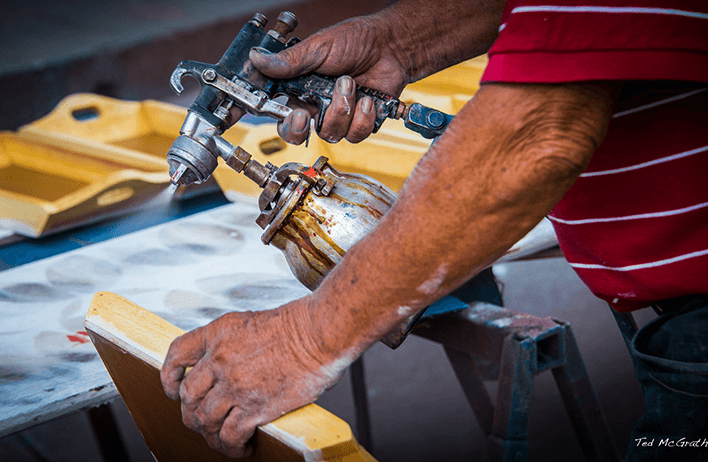When you sell online, you have a choice of doing three different kinds of selling.
The first is reselling physical products that you can buy via wholesale or drop ship. These products are usually manufactured by other companies and are available to most anyone who wants to sell them.
The second is selling (or reselling) digital products, like videos, ebooks, and software. These can be procured from others and resold by you, or you can create and sell them yourself. If you do this, you are a manufacturer to a certain extent.
The third is manufacturing your own products, and selling them. Products that would be sold exclusively by you, and you alone.
Unless, of course, you choose to let other people sell them, too.
Manufacturing your own products is the holy grail of ecommerce, and retail in general. In manufacturing, you control the price for which you sell (and so your margins, too), and you control how and where your product is sold.
In other words, you are the boss – and there’s no fear of price wars or someone undercutting the market and eating up your share.
So let’s get into the how to of manufacturing your own products, and the steps you need to take to get started.
Is it easy? No, not really. Is the reward potential high? You bet!
Deciding on an idea
The biggest challenge you face as an entrepreneur when manufacturing your own products is always what to manufacture. Compared to coming up with the right idea, getting your manufacturers lined up (and doing the actual manufacturing) is a breeze.
For some people, coming up with an idea is as simple as scaling up a home-cooked invention.
Take LunchSkins, for example.
LunchSkins was developed by three ladies who were concerned about how much plastic baggy waste was being generated by school lunches every day. To solve that problem, they developed a special fabric baggie that could be washed in the dishwasher and used over and over again.
For them, the only remaining challenge was that of scaling manufacturing, selling, and marketing.
Other times, it’s harder to manufacture products, most often due to the cost.
You always hear about KickStarter success stories where people end up raising 100,000% of their target capital, but those are rare cases. The percentage of projects that are not successfully funded is far greater.

That’s not to say the KickStarter route isn’t something to pursue – if you have a good idea, by all means, go for it, and here are some articles on how to create a top KickStarter campaign:
13 Tips For A Successful KickStarter Campaign
6 Tips From Kickstarter on How to Run a Successful Crowdfunding Campaign
10 Tips I Wish I Knew Before I Launched My Kickstarter Campaign
An easier path to take is to find something that’s already good and make it better. LunchSkins were actually designed on this concept. You had something with incredible utility, the sandwich baggie.
The sandwich baggie had a problem, though – it was one-use and very bad for the environment. To solve the problem, the baggie was turned into fabric and voila! A successful product.
To put it short, innovation is much easier than invention.
What about digital products?
So far, we’ve only talked about physical products. You also have digital products. Those are much easier to create, and to a certain extent, much less risky.
While you’d have to spend a few thousand dollars on prototyping and mass-producing even a small item, you can create a video course, develop software, or write an ebook spending only your time.
The return on investment in digital products is far greater, too, since the margins are nearly unlimited and there is no cost to “stock” the product.
Again, you’re going to have to find something good and worthy to create your digital product around. Many people have seen success creating a digital product from their expertise, no matter how mundane it may seem to an outsider.
In the early days of the internet (and perhaps even now), dog-training manuals were huge. People would make thousands, if not hundreds of thousands of dollars simply writing books on how to train dogs (using their own expertise).
For now, though, let’s focus more on physical products. So you have an idea, now what?
You’ll want to make a few sketches of your design – it’s one thing to picture something in your mind, but it’s something else altogether to put it on paper. Don’t worry if you aren’t a designer or an artist – just make a rough sketch of what you feel your product should look like.
Finding a manufacturer
The next step is finding a manufacturer. There are a couple of ways to do this.
You could just Google “widget manufacturer”, and find them directly through their website, or you could head to a directory such as Alibaba or ThomasNet, search for your product (or the closest thing to it), and find manufacturers like that.
When you deal with a manufacturer, the most important thing (hands down) is communication. If you and your manufacturer can communicate well, solving other problems and tackling other issues will be easy.
ThomasNet usually lists US manufacturers, so you shouldn’t have too much of a problem with communication there. On Alibaba though, things are a little different.
Chinese manufacturers usually read and write pretty decent English. If you feel you can’t communicate in the first couple of emails, try Skyping them (even if its text, don’t worry… just getting immediate responses makes things easier) – and if you can’t understand each other on Skype, look for another manufacturer – there are probably thousands.
Manufacturers will probably have items that are pretty closely related to your item – after communicating with a supplier and finding one that you like and that has a decent product, its time to ask for a sample.
Samples are not cheap – the shipping itself will be upwards of $10-$20, but it’ll be worth it. When you look at a sample, hold it in your hand, and actually use it, you’ll be able to really get a feel for the quality standards set by that manufacturer.
If you like what you see, get back in touch with them and talk to them about how you’d like to modify the product. Mostly everything on Alibaba is white-labeled, so most manufacturers won’t have any problem making something to your customizations.
At this point, you’ll have to dig deeper into your expense account, because manufacturers may not agree to make just 100 or 200 pieces of a customized product. They may insist on 500 or 1000 pieces to start.
One way to get around this is to request pricing for 200 pieces, then 500, then 1000, and then 2000 all in one email so they know you are serious.
After that, it’s a matter of sending your design, getting one more sample (never mass-produce without looking at it first), and then committing for the whole consignment.
In conclusion
In a world of Alibaba and ThomasNet, manufacturing your own products is possible without even speaking to your supplier or meeting them face to face. If you have small modifications that are easy to convey and implement, you should be able to do so without any problem.
If you are looking for something more intricate, then it may be prudent to first hire a designer who will make professional sketches and CAD images of how exactly you want the product to look and function, and once you are happy with those, send them over to the manufacturer to get it made.
One last tip for dealing with Alibaba – somehow, when you send an inquiry to one manufacturer for a product, 10 suppliers will contact you – most of them will be middlemen. Make sure to only reply to the guy you actually messaged – you’ll usually be able to tell because their email will have your original message in it with the Alibaba logo on it. 🙂
What else? What other tips do you have for manufacturing your own products?





